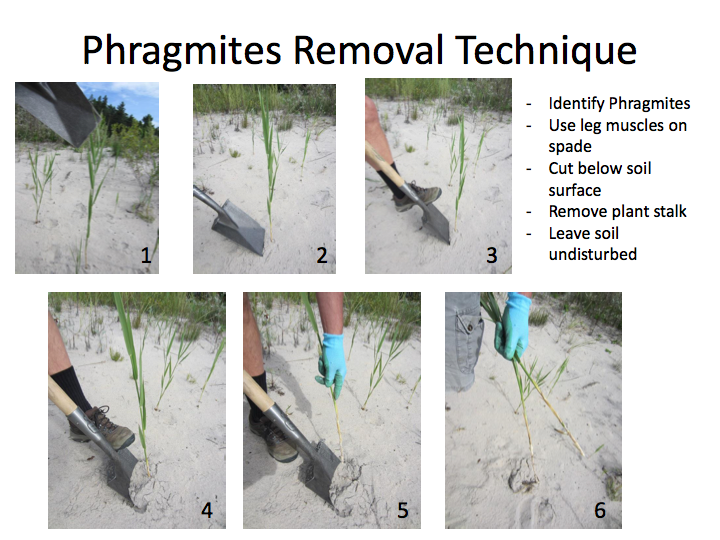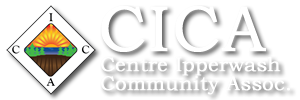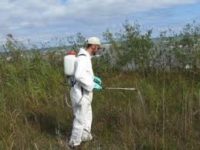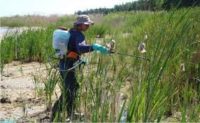Phrag Friday: Why Was Spraying Changed to Spading?

In the Spring plans were made to spray the Phragmites on Ipperwash beach and dunes. Backpack spraying allows applicators to target Phragmites specifically. This decision was based on the procedure used at Port Franks with an 87% to 95% success rate in killing the invasive Phragmites.
On June 26 a team from the Ministry of Natural Resources and Forestry (MNRF), the St. Clair Region Conservation Authority (SCRCA), the Lambton Shores Phragmites Community Group (LSPCG), the Ipperwash Phrag Phighters (IPP), and the Invasive Phragmites Community Group (IPCC) did a site visit to all the MNRF Crown Lands between West Ipperwash Road and Army Camp Road.
It was determined, at that time, that Phragmites in evidence were far fewer than expected due to spading the previous September and machines leveling the dune areas in several locations. Too many Phragmites will not meet the conditions for ideal spraying results. The ideal height of 1 metre to 1.5 metres would ensure that spraying would kill the above and below ground growth of the Phragmites, but would not harm other vegetation.
Smaller and less visible means many more Phragmites are growing underground. Phragmites root systems reach 2.5 metres to 10 metres below the surface. Phragmites, both above and below ground grow exponentially, which will mean a larger volume of plants next year. Disturbed sites encourage Phragmites to grow more aggressively.
We are still asking everyone to monitor the Phragmites growth only this summer. DO NOT use over-the-counter Roundup! The percentage of glyphosate in this product just makes the Phragmites develop an immunity to one of the only herbicides approved for land use in Canada. Licensed, knowledgeable herbicide applicators with proper permits are required to spray effectively!
The Ipperwash Phrag Phighters and the Lambton Shores Phragmites Community Group have purchased 15 spades to use during our volunteer spading events and for training purposes. Below you will find a step-by-step tutorial on the proper way to spade.
Put cut Phragmites in paper garden waste bags and dry before burning. NEVER compost.

Spading prevents photosynthesis by removing all the green growth above the surface. This hinders the growth of Phragmites. It also removes the stalk below ground level so that the ground is not dangerous for walkers and joggers.
Spading is not a “once and done” operation. Repeated spading is required. Lynn Short, with the Wymbolwood Phragmites Project has found that spading twice a year, late June and late September, reduces the regrowth of Phragmites significantly.
Arrangements are being made for a crew of five MNRF Rangers, MNRF staff volunteers and local volunteers to come out in force on Friday, August 11th for a massive spading event. You will be rewarded for your efforts! Stay tuned! Details will be released soon.
Spading pictures courtesy of Lynn Short, Wymbolwood Beach Phragmites Project


